Fish and plants for the nano aquarium

An unusual name for a seemingly ordinary container for keeping exotic fish - nano aquarium - is very popular today among fishkeeping at home. The term "nano", meaning something small, came to us from Greece. Not too long ago, this was the case for mini-reef aquariums that were huge and took up a lot of indoor space. Today manufacturers offer marine aquariums with a volume of less than 300 liters, there are capacities from 10 to 40 liters. Such a nano-aquarium will be a worthy decoration for any office or apartment.
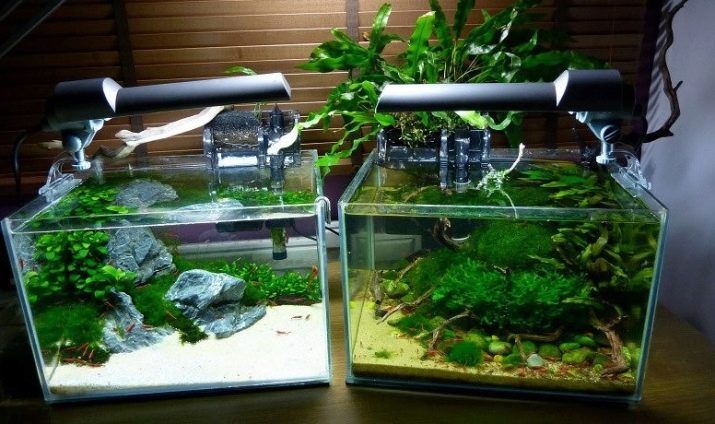
Choosing a capacity
Currently, anyone can buy a tropical freshwater aquarium in the size of 5, 10, 20, 25 and 30 liters, you can also buy a marine nano aquarium with a volume of 100 liters. Many of them are offered already equipped with special equipment: various lamps, filters and, in some cases, even soil.
Small containers of 30-40 liters are suitable for small aquarium fish, shrimp or red crystals if you like.
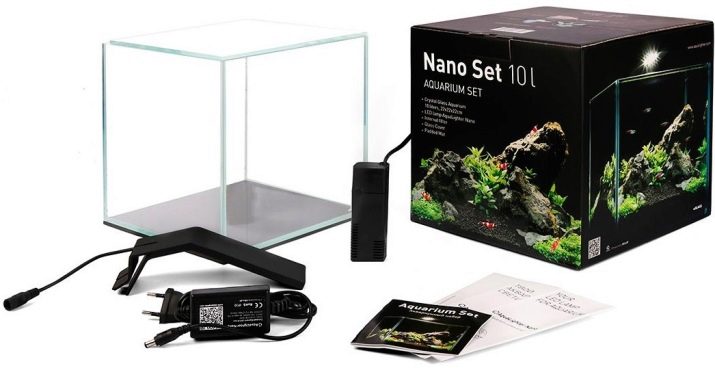
Equipment
To maintain the life of fish and plants in the aquarium, it is necessary to purchase special equipment in order to create the appropriate conditions for the underwater flora and fauna.
First of all, it is a cleaning filter, which is not difficult to find if the size of the container is not more than 40 liters.
The situation with lighting for nano aquariums is a little more complicated. In some cases, for a capacity of 40 liters, it is enough just to purchase ordinary small fluorescent lamps and attach them to the lid.
As for the very small "imitations of the ocean", next to them you can simply install compact table lamps on a special handle, with which you can change the direction and height of the light.
And if you decide to purchase a slightly larger nanoaquarium, you will have to pay for the pleasure by purchasing a container with already equipped lamps and appropriate filters. According to the technical characteristics of the lighting in this case should be at least 2-3 W for 3-4 liters.

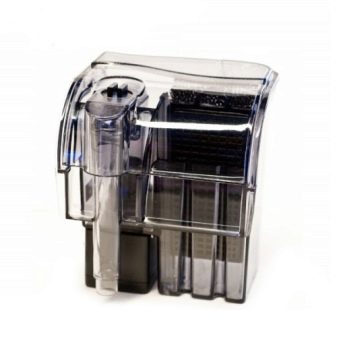
Vegetable world
When choosing representatives of flora for your underwater world, take this process more than seriously. Don't aim for plants with very large leaves - they won't look good in a small container. It is best not to buy fast growing plants, otherwise you will have to prune them very often, wasting additional time. Small, slow-growing varieties of mosses or ferns are ideal.
Experts recommend paying attention to fern Microsorum of the species nana or nana petite. This is a rather original small plant, forming dense thickets of emerald color. It is usually placed in the foreground of the aquarium.
A good purchase will be a small Cryptocoryne, a rather popular plant among aquarists, olive shade with a reddish underside, height - up to 12 cm.
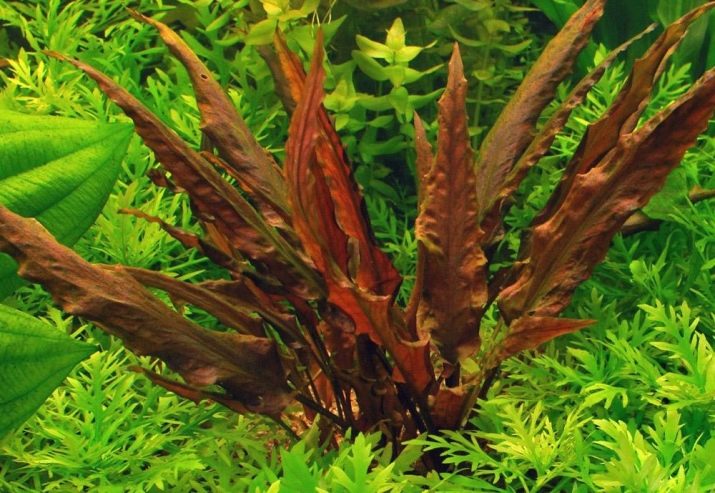
Javanese moss Taxiphyllum is very good in the aquarium, but it grows rather quickly, so in small containers it will quickly cover the entire surface. Therefore, experts recommend Vesicularia cultivar montagnei or weeping moss, which grows much more slowly. This kind of moss comes from China, the width of each bush reaches 5 cm, the appearance resembles our willow, for which it received such a name.
Good as a decor and echinodorus, creating a whole floating carpet. It is very delicate and airy, with linear leaves, up to 4 cm long, capable of creating whole thickets. In some cases, Echinodorus flowers are collected in an umbrella, sometimes they are simply located one above the other. Absolutely not picky about care.
Red plants such as Rotala wallichii and creeping Ludwigia 'Rubin, create a unique effect against the backdrop of greenery. They need bright lighting and constant cropping.
Pistia or water salad Is an amazing plant for your nano aquarium. Large floating rosettes on the surface of the water create an indescribable feeling. The diameter of large leaves reaches 25 cm, the root system sinks to the bottom, and fish frolic with pleasure in its weave. Requires bright lighting and temperatures from +24 to +30 degrees Celsius; in colder water, leaf growth slows down.
From stem plants, experts recommend Rotala wallichii or Didiplis diandra, which look good in the background of the aquarium, however, their growth is quite fast - up to several centimeters a day.
The list of plants is endless - it all depends on your imagination and the size of the nano aquarium.
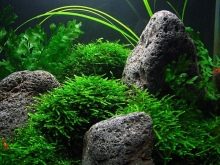

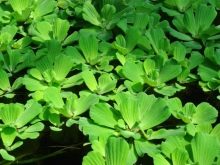
Underwater inhabitants
In containers of different sizes, experts recommend breeding only certain types of fish in order to be comfortable and not lead to their death.
For example, mini-fish are "populated" in small aquariums, such as, for example, green horadandia (Horadandia atukorali). The maximum length of this modest inhabitant of the seabed is 2 cm. They are very shy, keep in a flock, it is better to buy a dozen of them so that they feel comfortable.
Tetra amanda - the tiny red fish feels perfect in the smallest aquarium. This is a real decoration of any seascape, however, you should not overload it with a lot. It was discovered relatively recently - in 1987, and it gained great popularity due to its golden appearance.
Dwarf pecilobricons surprise with their unusual, slanting manner of swimming. They have several names, but the main translation is rocket, which is quite consistent with the style of behavior of these fish. This fish has transparent fins both on the peritoneum and on the chest. But the red stripe passing through the anal fin gives the fish a mystery, as well as an inexplicable change in the pattern on the body.
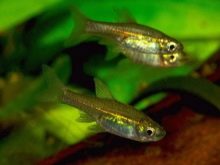
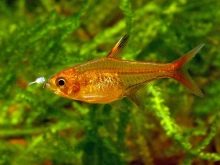
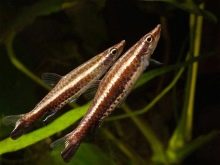
A great option is persistent guppy fish.The bright colors, small size and hardiness of the guppies make them quite popular.
Gourami fish (trichopsis) reach 3.5 cm in length and emit barely audible sounds, are very unpretentious in care.
Betta fish cockerel decoration of any aquarium: bright color, speed of movement, waving veil tail - it is difficult to take your eyes off such a specimen. The color is varied from bright red to blue-black, body length up to 6 cm.
Variegated Nannostomus nitidus (Nannostomus nitidus) in length reaches up to 3.5 cm. They cannot be placed with larger predatory representatives of the seabed, otherwise they will be eaten. They live in the upper layers of water, keep in a flock.
Dwarf catfish have long won the love of those who are engaged in fish farming. They are active, friendly, but due to their small size they can become prey for large fish. Float to the surface to capture air. In search of food, they can dig in the ground, creating "dust" storms.
Ideal for larger aquariums gobies Trimma cana or Elacatinus randalli, growing up to 6 cm. Blend dogs will also look good, Blenniidaewith over 300 varieties. Body length - up to 30 cm, feed on algae and plankton. By the way, instead of scales, these fish have a thick layer of mucus. The colors are varied - from lemon to camouflage shades. They feed on food and shellfish.
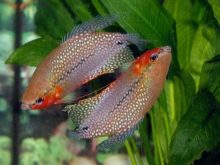
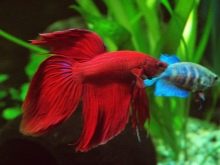
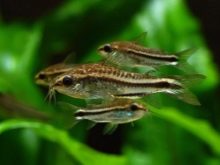
Suitable for the seabed in large nano aquariums fish from the pseudochromis family (Pseudochromidae). Their body length reaches 50 cm, on average it is preferable to individuals up to 29 cm. They have developed fins, an elongated body and a bright color that enlivens the decor of the aquatic world. They feed on crustaceans, they need places for shelter - driftwood, stones. Sometimes they are aggressive.
Popular clowns also looks great in large containers. They are active and eat a lot, which creates additional pollution. Amphiprion clarkii, as they are called, they require a large volume of water, the temperature of which must be at least +24 degrees Celsius. They eat food, love seafood - shrimp and squid.

By the way, shrimps and snails can also decorate your water world. These are the best indicators of the quality of water in the aquarium, they work as "orderlies", eating the remains of food. They reproduce well.
Proper maintenance and care of flora and fauna will help you enjoy the colorful spectacle of your nanoworld. Listen to the advice of experts, and you will truly enjoy the contemplation of the underwater world.
For more information on nano aquariums, see the next video.








